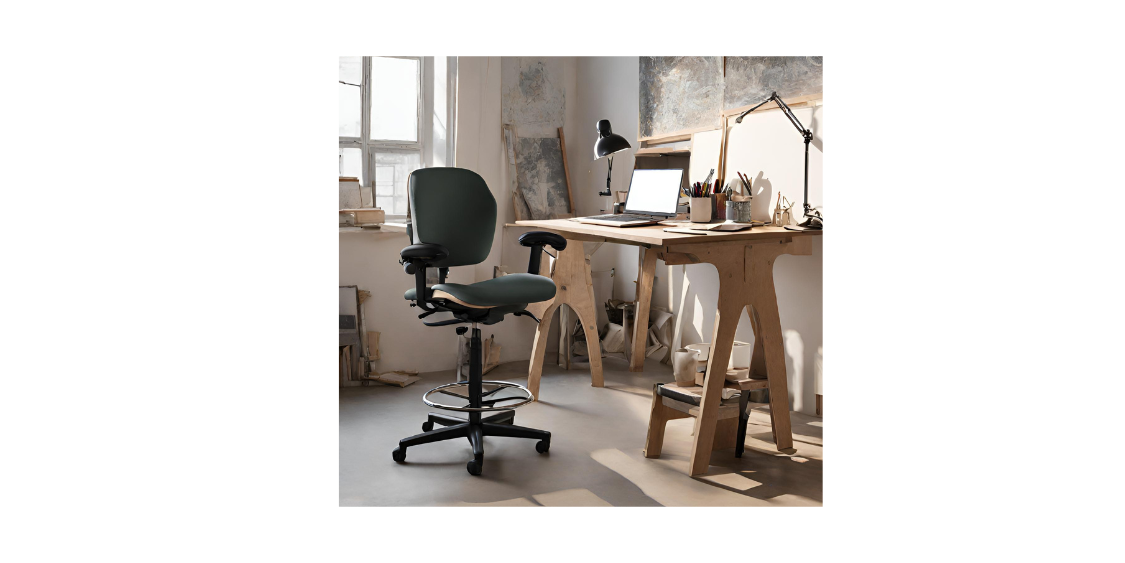
From Canvas to Comfort: Why Artists Choose Ergonomic Drafting Chairs Over Standard Stools
Imagine a painter engrossed in his masterpiece. He's almost done with his rendition of a sunset, the final brush strokes capturing the crimson hue of the sky. As the hours fly, his passion keeps him rooted. But once he sets his brush down, an overwhelming backache rivals his sense of accomplishment. A timeless piece of art, but at what cost? This story is all too familiar for many artists. No matter how vibrant the canvas is, a poor chair can cast a shadow over the brightest of masterpieces. Just as the painter chooses the right brush for texture and detail, choosing the right seat can make a difference in the artist's well-being.
Enter the ergonomic drafting chair.
Ergonomic vs. Traditional Chair: The Stats Don't Lie
According to a study published in Applied Ergonomics, when office workers were provided with ergonomic training and sit-stand workstations, there was a significant decrease in musculoskeletal and visual symptoms (Robertson et al., 2013). Let's break down the difference:
-
Standard Drafting Stools:
- Often fixed height or limited adjustment
- Little to no lumbar support
- Might tip the style scales but can be sketchy (pun intended) on comfort.
-
Ergonomic Drafting Chairs:
- Height adjustment tailored to individual needs
- Proper lumbar support to reduce back strain
- Adjustable armrests and footrests for utmost comfort.
- Sleek designs that don't compromise on style.

Ergonomic Drafting Chair - The Benefits:
Here are some reasons why ergonomic chairs might be your new best friend:
1. Better Posture:
- Details: These chairs are designed to naturally align with the curvature of your spine, promoting a neutral posture even during those long art sessions.
- Artist's POV: Think about those detailed, intricate patterns you draw or paint, or the precision required for shading. With an ergonomic chair, you're not constantly shifting or trying to find a sweet spot; you're positioned just right, giving you a consistent viewpoint and hand stability.
2. Decreased Risk of Pain:
- Details: The lumbar and body support prevents the spine from staying in a harmful position for prolonged periods. This can drastically reduce the onset of musculoskeletal problems over time. (Cornell University Ergonomics Web, 2020).
- Artist's POV: Remember the after-effects of a marathon drawing session — that nagging lower back pain or the crick in your neck? With an ergonomic chair, these pains can become tales of the past, letting you focus on your art without the looming thought of after-pain.
3. Increased Productivity:
- Details: A comfortable seating position means fewer interruptions. Without the need to stand, stretch, or adjust constantly, you can remain immersed in your work.
- Artist's POV: Imagine being "in the zone," where your brush strokes are fluid, and ideas flow naturally. Now imagine that focus getting disrupted because of an uncomfortable sitting position. With an ergonomic chair, the likelihood of such disruptions lessens, granting you longer, fruitful sessions of pure artistic expression.
Conclusion & Takeaways
It's easy for people and artists to become set in their ways, especially when it comes to the tools and equipment we've used for years. But as the saying goes, "Evolve or get left behind." For those in the artistic realm, you will benefit from:
- Reassess Your Seating: Your art is a reflection of your comfort. Don't let an outdated stool hinder your potential.
- Invest in Your Health: An ergonomic chair isn't just about comfort. It's an investment in your health, ensuring longevity in your craft.
- Explore and Adapt: The world of ergonomics is vast. Explore the possibilities and adapt your workspace to suit your evolving needs.
After all, if a chair isn't adding lines to your sketches, why let it add lines to your back?
